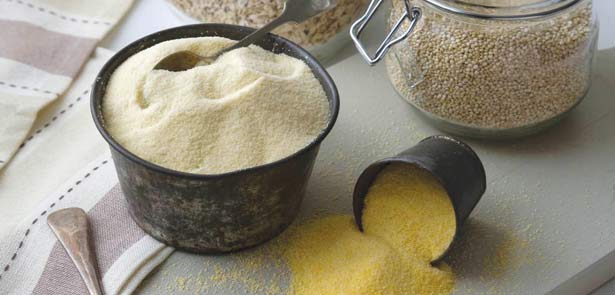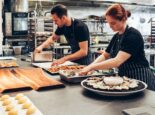Going Without Gluten

Coeliac disease is a medically diagnosed auto immune condition in which gluten causes an allergic reaction in the gut, possibly leading to malabsorption of certain nutrients and a range of symptoms including fatigue, weight loss and skin conditions. The rise in coeliac disease has created a huge demand for baking without gluten, and it has been estimated that as many as one percent of the population now cannot tolerate gluten. But in recent years, eating a gluten-free diet has become a bit of a trend, despite the fact that there is no evidence to suggest that following a gluten-free diet has any significant benefit in the general population.
Gluten is a protein found in the cereals wheat, rye and barley, it gives elasticity and the ability to ‘hold’ foods together. Eating a gluten-free diet means avoiding these grains, but there are also other foods that need to be avoided, as gluten is also used as a popular food additive in the manufacturing of a wide number of foods, as a flavouring or thickening agent (in foods such as ice-cream or ketchup).
The only way to be sure of which products or foods affect you is by avoiding them for a few weeks and then reintroducing them one at a time, monitoring your symptoms.
A gluten-free diet rules out all ordinary breads, pasta and many convenience foods such as gravies, soups and sauces, and initially it can seem as if there is nothing that can be safely eaten. Reading food labels is very necessary when approaching the gluten- free diet, as there is gluten hidden in many foods, such as; soy sauce (use tamari as an alternative), snack foods, meatballs, salad dressing, Worcestershire sauce, dry roasted nuts, spice mixes, processed meats, and even beer.
In the past few years the number of gluten-free foods available has increased enormously, with most high street supermarkets stocking a range of gluten-free foods to choose from. The following are suggestions for gluten-free alternatives:
■ corn (cornflour, cornflakes, corn pasta)
■ buckwheat (blinis, udon noodles)
■ gluten-free oats (porridge,oat cakes, oatmeal)
■ rice (brown, basmati, wild, noodles, crackers etc.)
■ millet (flakes, grains, flour, bread)
■ quinoa (grains, flakes, flour)
■ potatoes (flour)
■ kelp noodles
■ sago and tapioca
■ pulses (chickpea flour or pasta,soy flour or bread)
■ nuts (coconut, chestnut, almonds flours)
■ flax
Learning to cook gluten-free is a challenge, but not an impossible one! Once you know the ingredients you are allowed to have and those you should avoid, it is just a case of trial and error with adapting most recipes to gluten-free recipes. One school of thought
is that when cooking gluten-free it’s best to make only things that were never meant to contain gluten, for example polenta and orange cake, or ground almond chocolate cake, but with so many specialist ingredients now available, most recipes can be adapted.
People who follow a gluten-free diet may have low levels of certain vitamins and other nutrients in their diet, as many grains are enriched with vitamins. Gluten-free doesn’t necessarily equal healthy though, especially if people are doing it just to be in trend, or as an attempt to lose weight – there is the chance of missing out on important nutrients such as iron, B vitamins (needed for energy) and fibre (important for detoxification).
As with all diets, being organized is the best way to ensure you will stick to the diet. Planning your weekly meals in advance, shopping with a list of foods you are allowed (and reading labels on the foods you buy) and cooking meals from scratch, will all help to make life easier and ensure you are eating a balanced diet.















